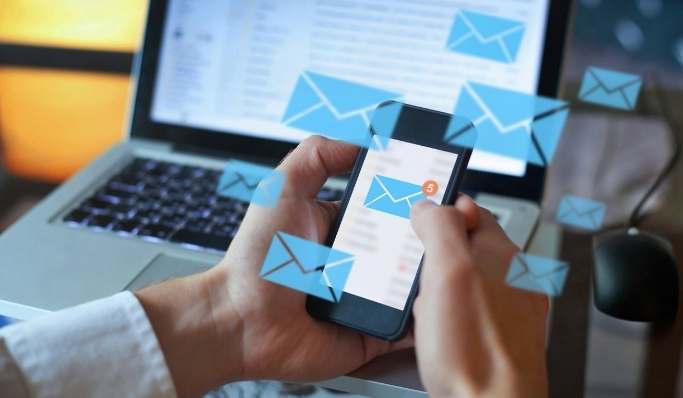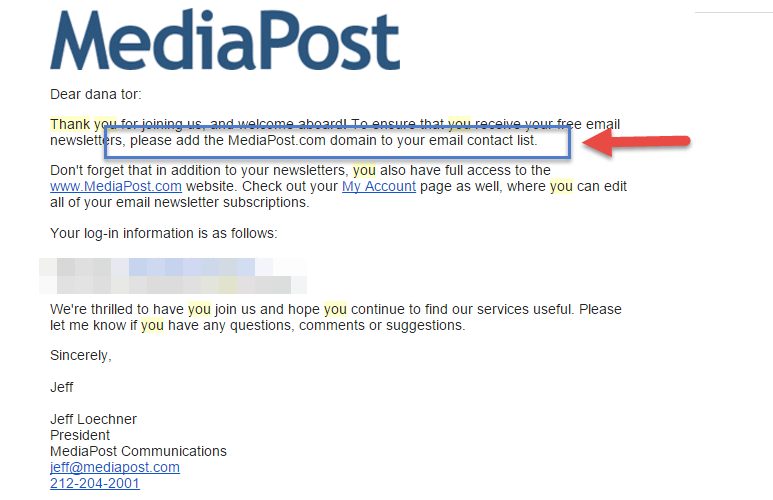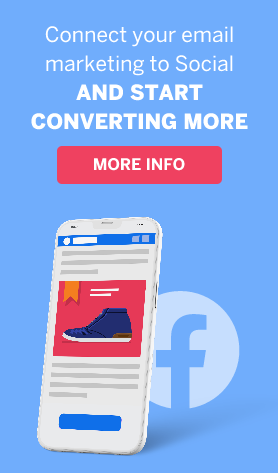How Not to Become a Spammer? Here Are 10 Things You Should Do
In the end of 2020, while Covid-19 was still widespread, many Americans received an especially satisfying email: “The Covid-19 vaccination is ready, and you deserve to get it immediately”. The lucky ones who got this message didn’t overthink it. They opened the email and were amazed to find out that they are part of a short list of civilians who are eligible to defeat the stubborn virus which has shaken the whole world. “All you need to do in order to fulfill your right is just to leave your personal information and wait for a call from The Ministry of Health in order to make an appointment”, the message said.
How come The Ministry of Health doesn’t have my personal info? That was the question asked by the suspicious people, before recalling the quarantine periods which have put a hold on their whole lives. They also made sure that no one was asking them for their credit card numbers. Only their name and surname, address, social security number, their date of birth and phone number- that’s not risky, obviously. Whoever filled in those details got the chance to enter the raffle for getting the vaccination, but that wasn’t all: These people took part in one of the largest frauds ever committed through emails, which also included identity theft and forgery of personal documents.
Yes, you’d be surprised but the “Spam Law” is still controversial, especially when we’re talking about an election period. The law which limits sending commercials without authorization from the recipient is still valid, but it seems that with all the flow of information and the variety of distractions- many advertisers forget that it only takes a few complaints or getting blocked by customers in order to enter the “Black Lists” of internet providers. The cyber era has taken a hard line on the protection of inboxes, thanks to the fear of fishing frauds and suspicious emails. The question of how to prevent a certain email from entering the “spam” folder is still relevant. The problem is that many legitimate messages get blocked by spam filters and find their way to the “trash” folders. There are many reasons for that, starting from subject lines loaded with exclamation marks, to distribution by systems which are unauthorized for a high number of recipients. As advertisers, nobody enjoys getting blocked, all the more so after a large investment in an advertising campaign.

nobody enjoys getting blocked (Depositphotos)
ActiveTrail does everything so that it doesn’t happen and that the transferring of your emails will reach the maximum. However, in order so that your mailing won’t enter the “spam” folders of your recipients, there are a few things you should do.
What do we do for the transferring of emails sent via Activetrail?
- Automatic Testing- ActiveTrail performs extensive testing and supports the sending standards of DKIM, SPF and Domain Keys. The support of the standards verifies compatibility between the server of ActiveTrail and the domain of your company. That is how the mailing providers make sure that no fraud or identity theft attempt of a third party is on the table. If they don’t find compatibility, they might block the emails.
- ActiveTrail uses a large amount of IP addresses for sending to mailing lists (so that in case a certain email was sent from an IP address and got into the “spam” folder, it wouldn’t harm other mailings)
- Automatic recipient debugging which has marked your mailing as spam and incorrect address management.
- Anti-Spam Policy- ActiveTrail adopts an anti-spam policy. We don’t rent, sell or provide email lists and don’t enable using ActiveTrail’s services to send emails to recipients which haven’t given their consent. Click here to read more about ActiveTrail’s anti-spam policy.
- A report system regarding spam complaints- Through the report system you can see the removal percentage, errors and complaints regarding each campaign and draw your conclusions accordingly.
- An option to file a spam related complaint to ActiveTrail- Each person who gets an email by ActiveTrail, and hasn’t given their consent to receive emails, can reach out to us and report getting a spam email.
All of the mentioned above are the things we do for the transferring of emails levels. That, to make sure your emails get through. Here are some more things we recommend doing.
10 things you should do to prevent your emails from entering the “spam” folder
1. Don’t be spammers
First, in order not to get into the “spam” folder, you must not be a spammer. The Israeli “Spam Law” states, among other things, that you must not send messages to those who haven’t explicitly given their consent. Read the rules of the law, consult with a lawyer, and make sure that your emailing complies with the legal requirements. Now you can continue reading and make sure that your recipients’ inboxes won’t mark you as spammers even though you aren’t one.
2. A “Thank You” email with a Double opt-in
After your recipients gave their consent to receiving your emails or have registered themselves to your list by filling a registration form, send them a “Thank You” email. This email is important, firstly since it reminds your recipients that they have registered to getting emails from you, and secondly that way you show them how your emails look like usually (so that they won’t mark it as spam in the future). Furthermore, use the “Thank You” email to receive a double opt-in from your recipients. A double opt-in is an option while registering to your recipients list which requires the recipients to actively register themselves to your list once again. That way, by the “Thank You” email you are sending, the recipients receive a message which asks them to authorize getting your emails and they need to click on the attached link and by doing so that’s the only way to get into your mailing list. This option helps reduce the removals from the list, get a higher number of emails openings and strengthens the connection between the sender and the recipient
3. A “Thank You” email that includes a coupon/ call to action/ recipient incentives
Gmail, for instance, classifies “spam” emails, “promotions” and such according to the recipients’ behavior. That way, if the recipient has moved your email to the “spam” folder one time, it’s very likely that the second time you send that recipient an email, it will automatically enter the “spam” folder (and not necessarily with this recipient only). Similarly, if a registered recipient has opened your email and clicked on it, it’s likely that Gmail will grant you a higher classification, so that way your chance to directly enter the recipient’s primary inbox will increase. Besides a double opt-in, a good way to improve email transferring is to send a “call to action” inside the “Thank You” email by including a coupon and/or a link to your website. The coupon or the “call to action” can not only get more people to visit your website and maybe even increase sales, but also that’s how you will be able to make your recipients note to their email provider that they are interested in receiving emails from you, by clicking on the links leading to your website.
use the “Thank You” email to receive a double opt-in from your recipients (Depositphotos)
4. A request to join a “contacts list” or ‘safe senders”
The best way to enter safely to your recipient’s primary inbox is by them adding you to their “contacts list” or “safe senders” list. How do you make them do so? By the most easy and direct manner- ask them to. One successful way to ask that from your recipient is via a “Thank You” email. That’s how to show them that you are serious about their registration, and you create a higher engagement. Entering the recipients’ “safe senders” list or ‘contacts list” decreases immensely you entering the ‘spam’ folder and increases the chances that you won’t get into the “promotions” tab either. Here are some examples to a “Thank You” email which includes a request to enter the “contacts list” of Media Post and Hacking UI:

Another option you have is to send a unique campaign that includes a request to get added to the ‘contacts list”. There’s no doubt that this issue certainly justifies a special campaign and that being added to a “contacts list” will also increase the percentage of your email openings. In the campaign you are sending, explain to the recipients how to add you. For that purpose, we have prepared an explanation of how to add an email address to the ‘safe senders” list or to the “contacts list” at the largest email providers- send it to your recipients, that way they will know what to do.
In case you are sending to recipients using “Outlook”, by being added to the “safe senders” list, they will always be able to view the photos included in the email (in Outlook, if you are not in the “safe senders” list, the photos aren’t shown automatically).
5. Removal management and mailing preferences
Point out to your customer through the registration form what exactly you are going to send them emails about and what the frequency of emails will be, so they won’t be surprised. If you send emails frequently and have a large variety of topics, ask the recipients in the registration form fields what interests them.
Alternatively, create a page of “Mailing Preferences Management”. You can send your customers an awareness email about the registration and direct them to the mailing preferences page, just like marketingsherpa had done. Marketingsherpa send six different newsletters, and in the “Thank You’ email they ask the recipients what topics they would like to receive emails about:
Each email that is sent should include a “block” of “Click here to get removed from the mailing list”, and anyway there’s no way to send emails through ActiveTrail without that option. To the mailing preferences page which you created, you can add a link from the “mailing list removal” button which is located inside your email. That way, while being removed from the list, you are able to give your registered recipients an option to not get completely removed from your mailing list, but only to get removed from one mailing list, which is one of a few.
6. “Sent By” name and an email address you can reply to (which isn’t Gmail or Yahoo)
The “Sent By” name appears first to your recipients in their Gmail inbox. If the “Sent By” name or no-reply, there’s a good chance your email will enter the “spam” folder. If there’s no option to reply to your email, that also increases that chance. Create a “Sent By” name with a regular email address which the recipient can reply to. However, make sure that this email address won’t be a Gmail one or Yahoo. These big email providers don’t like that emails which are not sent directly by their platform, are being sent with their address in the ‘Sent By” column and they mark them as “spam’.
7. Subject line and “spam” words
There are a few “spam” words that if you make use of you are guaranteed to enter the “spam” folder. For this not to happen, make sure your subject line won’t include the words “Final Sale”, “Sale”, “Sale!!!!!!” and more words such as those, or the sign “$” and similar ones. This does not mean you cannot include the word “sale” in your subject line, however you must include additional content, which will create a genuine subject line to your email and won’t be too short. On the other hand, subject lines which are too long and include too much content will enter the “spam” folder so keep it balanced. If the content of the email is an advertisement, you must note that in the subject line in order for the email to not be classified as “spam”
8. Technical issues
To prevent your email from entering the “spam’ folder, it’s important to pay heed to technical issues. Make sure all the ALTs- the names of your photos will be updated and relevant. If you are using graphics, make sure that the code of your email is clean and that all URLs in the email are updated and written properly.
9. Email content and graphics
Your email requires content. Google reads the content of your emails, make sure they’re not gibberish and that there’s content which matches the email’s subject line. If you create emails with HTML, include a “text only” version (this also helps in case the recipient is unable to view HTML). So, in order not to enter the “spam” folder, or the “promotions” tab, make sure you have a good relation between the content and the photo, and that your photos are viewed properly. A mail that is consisted of graphics only has a better chance to enter the ”spam” folder. The newsletter’s design itself also holds importance regarding being classified as “spam”. We even keep a few secrets about this: “Outlook” doesn’t like red and tends to mark “red emails” as “spam”. Generally, emails containing too bold or too bright colors might be marked as “spam”, on the other hand emails which include a lot of “skin-like” color are also at risk.
10. Using Domain Keys
Installing SPF/DKIM/Domain Keys on your server is crucial to not be marked as “spam”. ActiveTrail supports these sending standards, so after you install them and define them in your system, don’t forget to mark a “V” in each place we ask you if you want to use Domain Keys in order to make sure your emails go to the right place. That’s it, now you are ready. Follow these tips and tricks, and if you have any further questions regarding this subject, you are welcome to contact us.



